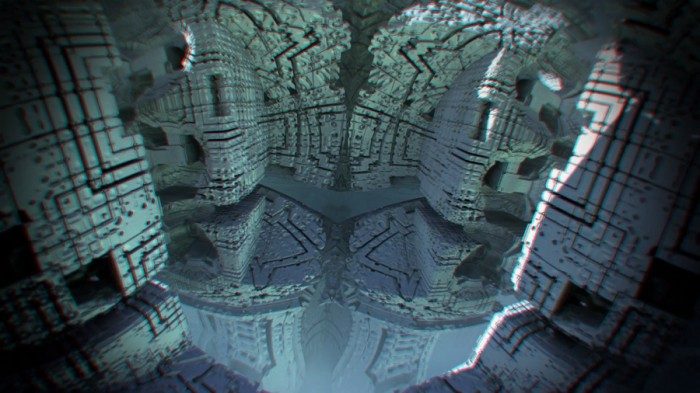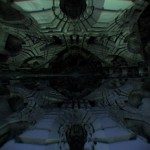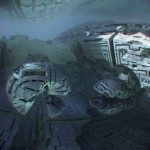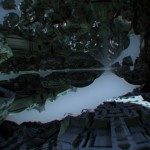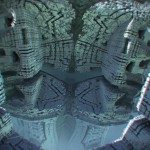Fractal artist Julius Horsthuis has released Foreign Nature, a 360 video aimed for playback on the Oculus Rift DK2, which sends you through a fractal world where the line between man-made and natural is never quite clear. The free download is available now.
Some say the universe is fractal in nature—that there is no ‘final unit’—but that it just keeps going in a glorious dance of algorithmic infinity. Okay, so the sort of pre-rendered fractals in Julius Horsthuis’ 360 video Foreign Nature aren’t exactly infinite, but if we could pop the hood on the software behind the crenelated scenery, you would see that there is no end to the formulaic generated crags and fissures. “It’s turtles all the way down,” as the saying goes.
Julius Horsthuis, an Amsterdam based visual effects artist, published his first fractal video back in December 2013, but the release of Foreign Nature is his first 360 fractal video made especially for VR headsets. All we have to say is: “Woah.”
Download Foreign Nature
(You can use Whirlygig for playback)
You may remember fractal art as something banal, worthy of psychedelic posters and Trapper Keepers from days of yore, but some powerful (and free) software, namely Mandelbulb 3D, is injecting new life into the genre and allowing artists like Julius Horsthuis to create breathtakingly impossible environments, while virtual reality allows those worlds to be explored like never before.
Unlike other fractal VR attempts like Boxplorer2, this particular journey is pre-rendered and played back as a 360 degree video. This makes more accessible to lower-end hardware, though it comes at the cost of real-time interactivity (being able to choose which direction you go). Thankfully, Horsthuis lays out a pleasing path that won’t have you missing out on self-guidance—at least until you’ve traveled it many times.
See Also: Boxplorer2 Oculus Rift Fractals Now Available for Download
What makes the scenery in Foreign Nature so compelling isn’t just the faces, temples, or geographic likeness that melt into existence, or how eerily familiar it is while at the same time maintaining a stark… well… foreignness to it all, but it’s the hypercubic 4-dimensional physics that allow for these things to transmute into 3-dimensional space that really has us turning our heads.
But Horsthuis is no mathematician, as most of his fractal algorithms are the result of pure experimentation. “Nine out of ten times this results in nothing much, or just crazy unrenderable noise. But every now and then a pattern starts to emerge that looks like something totally awesome,” Horsthuis says in an interview with The Creators Project.
When asked how his video made especially for VR headsets differed from his earlier videos, Horsthuis replied “[they]… are completely different. Although the technical process is very similar, all the tricks I know as a filmmaker/animator can be thrown out the window.”
In fact, the immersive weight of a 360-degree fractal environment (even if pre-rendered) requires a fairly large file size to transmit the subtlety in Foreign Nature, which tops out at a whopping 3GB for a little under 10 minutes of 4000×2000 resolution video.
Most gaming rigs using either DK1 or DK2 headsets shouldn’t have too much trouble chewing though the file, but mid-lower level GPUs may experience some pretty significant stutters as it chokes to keep up. Some persistent judder and screen tearing was also noted in Samsung Gear VR, as the file may be too large for the Note 4’s Qualcomm Adreno 420 GPU to handle as well.
We hope to see more 360 fractal VR experiences from Julius Horsthuis (fingers crossed for 3D next time), along with some options regarding lower file sizes (relative to length) so the entire VR community can get in on his exceptionally freaky architecture.


